Matador Network's Blog, page 377
December 14, 2022
Testing the Go City Pass: Is This the Most Affordable and Fastest Way To See Major Attractions?

If it’s your first time in Paris, you’ll want to visit the Louvre. Never been to New York City before? You gotta go up the Empire State Building. The same can be said about the major sites in any major city. Going to the big attractions doesn’t make you an unimaginative traveler, it makes you a curious one. Those landmarks are synonymous with the city they’re in for a good reason. And, like for just about everything in this life, there’s an app for that. Go City helps travelers book the most famous attractions in 30 destinations around the world with just a few taps on your phone.
After testing Go City in Barcelona, here’s everything you need to know before you buy a Go City pass.
What is the Go City app?What cities are covered by the Go City app?How does Go City work?I tested Go City in Barcelona. Was it worth it?So, is Go City worth it?What is the Go City app?
Photo: Morgane Croissant
Go City helps travelers book access to more than 1,500 attractions, experiences, and tours in 30 cities, including the Rijksmuseum in Amsterdam, the Guinness Storehouse in Dublin, the Burj Khalifa in Dubai, Gardens by the Bay in Singapore, etc. You get the gist: Everything a first-time traveler would want to see, all neatly bundled up in one app. All you need to do is choose what kind of Go City pass works best for your bandwidth and your wallet and pick your attractions, then you’ll be sent a QR code that works as your ticket.
What cities are covered by the Go City app?Go City currently covers 30 destinations, and will continue to expand worldwide in 2023.
In Europe:
Amsterdam, The NetherlandsBarcelona, SpainDublin, IrelandGothenburg, SwedenHelsinki, FinlandLondon, EnglandMadrid, SpainParis, FranceRome, ItalyStockholm, SwedenVienna, AustriaIn the United States:
Boston, MassachusettChicago, IllinoisLas Vegas, NevadaLos Angeles, CaliforniaMiami, FloridaNew Orleans, LouisianaNew York City, New YorkOahu, HawaiiOrlando, FloridaSan Antonio, TexasSan Diego, CaliforniaSan Francisco, CaliforniaIn Asia:
Bangkok, ThailandHong KongSeoul, South KoreaIn Mexico:
CancunIn the Middle East:
Dubai, UAEIn Oceania:Sydney, AustraliaHow does Go City work?Go City offers two types of passes:
The All-Inclusive Pass: Choose as many attractions as you wish within a specific time frame of two, three, four, five, six, or seven days. The pass is not valid beyond that time frame. The Explorer Pass: Choice of two, three, four, five, six, or seven attractions. This pass is valid for 60 days after purchase.Once you’ve purchased the Go City pass that works best for you, you’re given a QR code that will work as your admission ticket for all the attractions you choose to visit. You won’t have to line up for a ticket or have to deal with the local currency. Just present your QR code and you’re good to go.
Some attractions require advance booking, particularly ones that include a guided visit. Follow the advice from the app and book early if prompted to do so. The Go City pass is convenient, but it’s not magic — if an attraction or guided visit group is full, you won’t get in no matter what.I tested Go City in Barcelona. Was it worth it?
Photo: Morgane Croissant
I was given a Go City Explorer Pass last November to test out in Barcelona. The price of the pass was 79 EUR ($83.10 at time of writing) and included three attractions of my choice. I went through the long list of 48 attractions currently available on Go City for Barcelona and picked a guided visit of the Sagrada Família, a guided tour of Park Güell, and a return cable car ride on the Teleferic de Montjuic all the way to Montjuic Castle. It was my first time in Barcelona, therefore I opted to see the main sights. However there are plenty of other attractions on the Go City app that would suit travelers who have already been to Barcelona and want to try out something different, like a mystery-solving tour around the Cathedral of Barcelona in the atmospheric Gothic Quarter or a boat cruise to see the city from a different perspective.
How much money did I save with my Go City pass in Barcelona?
Price as displayed on the Go City Website. Photo: Morgane Croissant
According to the prices displayed on the Go City app, by having this pass, I was saving 10.20 EUR ($10.75). A guided tour of the Sagrada Família was 49 EUR ($51.55), a guided visit of Park Güell was 26 EUR ($27.35), and the return ride on the cable car was 14.20 EUR ($14.95), making for a total of 89.20 EUR ($93.85). That seemed like a great deal: I was saving more than 10 bucks and got to skip all the ticket lines.
After further digging, however, the deal seemed a little less appealing. I checked the price of each attraction I had chosen on each official website and noted a significant difference. A guided tour of the Sagrada Família was 30 EUR ($31.55), a guided visit of Park Güell was 22 EUR ($23.14), and the return ride on the cable car was 12.78 EUR ($13.44), making for a total of 64.78 EUR ($68.10). That meant that I was paying 15 bucks for the advantage of skipping the ticket lines.

Price as displayed on the attraction's official website. Photo: Morgane Croissant

Price as displayed on the attraction's official website. Photo: Morgane Croissant

Price as displayed on the attraction's official website. Photo: Morgane Croissant
I contacted Go City to understand the pricing displayed on the app a little better and got a clarification on the discrepancy. The guided tours of the Sagrada Família and Park Güell are run by a third-party operator called Amigo Tours, which charges more than the official attractions. The pricing on the Go City app was in line with that of Amigo Tours. The Go City representative I talked to explained, “We source the best providers for our customers,” but I can’t comment on the fact that an experience with Amigo Tours is better than one organized with the official attractions. The price difference for the cable car, however, is due to an online promotion run by the Teleferic de Montjuic, and Go City cannot adjust their pricing every time an attraction runs a deal — that’s for you to do if you want to keep a close eye on your spendings.
Granted, it is convenient to have all your tickets in one place and not having to queue to get in some of the most famous attractions in Barcelona, but if you’re on a tight budget, you need to compare the official prices to those of the app carefully before you make your purchase. Also, if you think that time is money and paying a little more is worth it if you get to skip the lines, make sure there are actually lines at the time and places you’re planning to visit. There were no lines at Park Güell or at the Teleferic de Montjuic when I was there in early November (well off season, obviously).
How practical is the Go City pass in Barcelona, really?Waiting is inevitable: While you will skip the ticket lines, that doesn’t mean you won’t be waiting around before entering the attraction you wish to visit. The guided visits of the Sagrada Família and Park Güell required that I arrive 10 minutes before the time indicated on my ticket and I waited for another good 15 minutes outside for guides to sort the different groups out, get the audio guides, and get us through to the entrance.
Credit card required: Because the Sagrada Família and Park Güell are two very popular attractions, I was prompted by the Go City app to book my guided visits in advance. While booking the Sagrada Família visit was a breeze, booking the Park Güell one required me to provide my credit card number. Intrigued as to why I would have to do it even though my Go City pass was already paid for, I called the tour guide company and asked. I was told that it was because if I did not show up for the tour, I would be charged even though the Go City pass had already been paid for. So, is Go City worth it?Go City can be a time and money-saver, but not for all cities or all attractions, and not for every day of the year. You truly need to spend some time in the app and on the attractions’ websites looking at the prices of the attractions, tours, and experiences on offer and make your decision carefully.
A Go City representative explained that the prices vary according to the destination due to the number and cost of attractions in each destination, which makes sense. “The most expensive option is Dubai, due to the cost of the attractions in the city, and the least expensive option is Philly,” she said. “Additionally, the greatest potential savings can be found in Oahu where travelers can save up to 67 percent with the three-day All-Inclusive Pass.”
The type of pass you purchase can also make a big difference in how much money you save, so weigh all your options mindfully. If money is no hindrance and you just want to save time when the crowds are at their worst, go for it. Go City’s best asset is its practicality. 
Floating in Chile’s Atacama Desert Pools Is an Otherworldly Experience

The Atacama Desert is a desert located in Chile. It is one of the driest places on Earth, with some areas receiving less than one millimeter of rainfall per year. Despite its arid conditions, the Atacama Desert is home to a variety of flora and fauna, including cacti, lichens, and several species of birds. The Atacama Desert is a popular tourist destination due to its unique landscapes and abundance of natural beauty.
While it’s very much a desert, one of the biggest tourist draws is something you may not expect to find in your average desert: beautiful natural pools dotted across the landscape.
What are salt pools?
@visit Floating in a dream-like state in the Atacama Desert of Chile.Did you know this region has the largest supply of sodium nitrite in the world?! Studies by NASA have also concluded that this is the driest desert in the world. Evidence shows that the Atacama Desert may not have had any significant rainfall from 1570 all the way until 1971. Pretty wild
Ig: @jess.wandering #chile ♬ Paradise – Ikson

Photo: JeSleiter/Shutterstock
Salt pools are pools of water that have a high concentration of salt. The salt makes the water denser, which is why objects that normally wouldn’t float well — like people — can easily float on the surface. The more salt there is, the easier it’ll be to float. Swimming and floating are the most popular activities in the natural salt pools of Chile, though salt pools around the world are commonly part of health and wellness treatments.
Some people think the high concentration of minerals in salt water has therapeutic effects on their skin and respiratory system, though the science is still a little out on that one. Regardless, they’re fun to float in.

Photo: SierraLemon/Shutterstock
The pools form as a result of evaporation in dry areas, like the Atacama Desert. As the water in the desert evaporates, it leaves behind a higher concentration of salt, causing the natural formation of saltwater pools with significantly higher salt concentrations than seawater.
One of the most eye-catching animals in the area is the greater flamingo, usually seen perched on lagoons, standing out against the bright blue water. While it may seem like an unlikely place to find these birds, they can survive long periods of harsh weather conditions while searching for food in the natural salt pools and lagoons in the area.
Where is the Atacama Desert?Chile’s natural salt pools are near San Pedro de Atacama in the Atacama Desert. However, it’ll still be a long drive from town to reach the natural salt pools as the Atacama Desert covers more than 40,000 square miles in central Chile. The closest airport is the Calama Airport, which is about a two-hour flight from Santiago.
It’s a bit far from Chile’s other major outdoor paradise — Patagonia — but if you have about two months to take off, you can link the Atacama Desert with the southern national parks, creating what may be the most amazing road trip in the world.
The best pools to visit in the area
Photo: Alexandree/Shutterstock
Laguna Piedra: This is a popular saltwater pool only about 30 minutes from San Pedro. The water is cold but super buoyant, and there are shower facilities in the area to get the salt off your skin after your float sesh. The entry fee is around 15,000 Chilean Pesos (around $18 US), and it tends to get busy as it’s a popular stop on area tours of the desert’s natural salt pools.Lagunas Escondidas de Baltinache: A few of the area natural salt pools have similar names, so make sure you’re headed to the correct one — it’s about an hour west of San Pedro by car. The entry fee is about $6 US and it’s very, very salty, making it one of the easiest places to float in the entire desert. Be sure to shower afterward to get the salt off your skin.The Puritama Hot Springs: If you want to soak in warmer waters, visit the Puritama Hot Springs. They’re not nearly as salty as the natural salt pools so you may not float, but it’s much more developed and offers a lovely sunset soak option you can book online for about $20 US.The Chaxa Lagoon: One of the most famous pools in the Atacama Desert is Chaxa Lagoon. Located near San Pedro de Atacama, this lagoon usually offers the chance to observe local wildlife, including flamingos. Note that this isn’t a swimming lagoon, but it’s a great spot for photography. It’s about a two-hour drive from San Pedro.Natural salt pool toursIf you’d rather not rent a car and drive yourself, you’ll find plenty of companies offering tours of the various natural salt pools near San Pedro, ranging from private and all-day photo tours of the pools to affordable half-day group tours to just one or two pools. You can visit year-round, though it may be more pleasant to float in the colder salt pools in the summer (December through March in Chile). 
6 Luxury Seoul Hotels With Unbeatable Panoramic Views

In Seoul, days begin with the quiet beauty of the morning mist, while night starts with a dusk that envelopes the blue evening sky hanging over the lively and eclectic metropolis. For visitors, one of the best ways to take it all in is from one of the handful of Seoul luxury hotels with panoramic views.
The Shilla Seoul
Photo: The Shilla Seoul
Here, contemporary design blends with traditional patterns and styles from the Shilla Dynasty, which ruled from the first century BCE to the seventh century CE, offering a robust look into the rich history of Korea. The hotel’s 1711-square-foot Shilla Suite offers incomparable views of the iconic Mount Namsan and the Seoul skyline through floor-to-ceiling windows. For true luxury, take it all in from the free-standing marble bathtub — nothing compares to watching the sunset while relaxing in the tub with a glass of Champagne.
You don’t have to be staying at the property to take it all in. If you’re just visiting for the day, head to The Executive Lounge on the 23rd floor for breakfast, afternoon tea, or happy hour. Urban Island, the third-floor outdoor pool open spring through fall, offers unobstructed views of Namsan Mountain. One floor down, the two Michelin-star La Yeon serves contemporary interpretations of classic Korean cuisine, while Ariake serves authentic Japanese cuisine that includes fresh seasonal seafood dishes with a choice of 37 different options of premium sake.
The Shilla Seoul: 249 Dongho-ro, Jung-gu, Seoul, South Korea
Mondrian Seoul Itaewon
Photo: Mondrian Seoul Itaewon
The Mondrian Seoul Itaewon is a lifestyle destination in its own right. Expressive, forward-thinking design and immersive décor make your stay here one that is full of sensory stimulation.
The 295 guestrooms have interiors designed by Singapore-based company Asylum that reflect the lively district with bold, vibrant, cutting-edge designs. The 904-square-foot Mondrian Suite is the real showstopper here, offering a dazzling view of Itaewon’s skyline, the Namsan Tower, and impressive views of the city that reflect the heart and soul of Seoul.
The hotel includes a premium fitness club, a 25-meter swimming pool, and a luxurious sauna, as well as convenient access to the Itaewon area. Try some mouthwatering Mediterranean cuisine at Cleo or wind down with soothing tea or sip on a collection of bespoke cocktails at Blind Spot. If you fancy something stronger, sample a selection of the finest malt whiskeys on the rooftop terrace at Privilege bar.
It’s hard to beat the location. Itaewon is known for its cosmopolitan dining and nightlife. It’s filled with Korean BBQ, bistros, and charming hole-in-the-wall restaurants. The famous Itaewon Antique Furniture Street is a stroll away, and the nearby War Memorial of Korea museum commemorates the South Korean and United Nation soldiers who died during the Korean War from June 25, 1950, to July 17, 1953, when North Korea invaded South Korea.
Mondrian Seoul Itaewon: 23 Jangmun-ro, Yongsan-gu, Seoul, South Korea
Fairmont Ambassador Seoul
Photo: Fairmont Ambassador Seoul
Situated at Parc.1 complex, one of Seoul’s most prominent new addresses in Yeouido Island, the five-star Fairmont Ambassador Seoul opened last year and offers breathtaking views of the Han River and the vibrant Yeouido skyline.
For suites with the best views, the expansive Presidential Suite on the 28th floor has floor-to-ceiling windows through which you can see the National Assembly building, Han River, and Yeouido skyline. A boardroom, dining room, and state-of-the-art cycling machine are also included. There’s also the Diplomatic Sky Suite, which has two bedrooms, a spacious dining room, and a generous amount of natural light with floor-to-ceiling glass windows and a marble bathroom.
M29, the hotel’s signature rooftop bar serves custom-made cocktails best enjoyed with the view. The hotel’s gourmet restaurant on the 29th floor, Mariposa, is headed by Chef Andre Lee and serves modern European cuisine.
Located in Yeongdeungpo-gu, the hotel is a few minutes drive to the National Museum of Korea, the Lotte Outlets, the YG Entertainment Building, and Namsan Park. The popular shopping destination of Myeongdong Street is also close by for some retail therapy.
Fairmont Ambassador Seoul: 108 Yeoui-daero, Yeongdeungpo-gu, Seoul, South Korea
Hotel Naru Seoul MGallery Ambassador
Photo: Hotel Naru Seoul MGallery Ambassador
Named after the original name of the area, Maponaru, the boutique Hotel Naru Seoul MGallery Ambassador offers unparalleled views of the Han River and Bamseom islet from its 20th-floor lobby. Located on the northern banks of the Han River, it’s less than an hour drive to and from the Incheon International Airport.
Conceptualized with biophilic interior design that connects spaces occupied by people to nature, the hotel offers a tranquil setting in the middle of bustling Seoul.
To book a room with the best views, consider staying at the Naru Suite, which has a large terrace that’s nearly as large as the suite’s interior and has majestic views of Namsan and Lotte World Tower. The beauty isn’t limited to starting at what’s outside. The hotel collaborates with contemporary local artists who are passionate about representing Korean culture through their artwork.
Hotel Naru Seoul MGallery Ambassador: 8 Mapo-daero, Mapo-gu, Seoul, South Korea
Signiel Seoul
Photo: Signiel Seoul
Located on floors 76 to 101 of Lotte World Tower — a remarkable 1,823-feet-high structure with 123 floors — the Signiel Seoul is the country’s tallest tower and the sixth tallest in the world. All 235 rooms have exceptional panoramic views of Seoul. Guests can enjoy views of the Han River, Jamsil neighborhood, N Seoul Tower, Mongchontoseong Fortress, the Olympic Park, and the Gangnam skyline and beyond.
Its crown jewel is the Royal Suite Room, which has hosted many high-profile clients and celebrities. The lavish suite features a spacious dining room with elegant minimalistic furnishings and fabrics, and a marble jacuzzi overlooking the scenic views of the Gangnam skyline.
The hotel is located in the Songpa-Gu district, in the southeastern part of Seoul, along the Han River. It is a quiet residential area, compared to the hustle and bustle of its neighbor, Gangnam. Major attractions in the area are Lotte World, the Olympic Park, and the Samjeondo Monument.
If you’re just looking for a night out instead of a full stay, dine at STAY, a French restaurant helmed by acclaimed chef Yannick Alleno; drink Champagne on the 81st floor at Bar 81, which has the largest Champagne collection in South Korea; or grab something sweet from Bakery Pastry Salon, which has desserts like cakes and tarts handpicked by Alleno and his team.
Signiel Seoul: 300 Olympic-ro, Songpa-gu, Seoul, South Korea
Josun Palace, a Luxury Collection Hotel, Seoul Gangnam
Photo: Josun Palace, a Luxury Collection Hotel, Seoul Gangnam
At the Josun Palace, check into one of the suites to catch one of Seoul’s famous views of the upscale Gangnam district. There are also sunset views beyond the distant mountain ranges of Mount Namsan.
The hotel’s 254 rooms and suites feature interiors designed with a modern twist to a 100-year-old legacy. The extravagant Josun Grand Master Suite, a Presidential Suite located on the Heritage Club level, is one of the most sought-after rooms in part thanks to mesmerizing views of Namsan and Lotte Signiel Tower.
The hotel is known for award-winning dining concepts at its five venues, including chef Son Jong-won’s Michelin-star restaurant Eatanic Garden, which serves contemporary Korean cuisine. To let your hair down, head to the 1914 Lounge & Bar for some warm tea at noon or dress up and sip cocktails in the evening while enjoying the stunning city views from 30-foot-tall glass windows. Not to be missed is the sky-high heated pool and deck offering gorgeous views of Gangnam.
Josun Palace, a Luxury Collection Hotel, Seoul Gangnam: Teheran-ro, 231 Gangnam-gu, Seoul, South Korea 
This All-Inclusive Luxury Resort in Los Cabos, Mexico, Feels Like the Pinnacle of Paradise

Taking a trip to the luxurious, all-inclusive Grand Velas Los Cabos resort, between Cabo San Lucas and San José del Cabo, feels like stepping into a fairy tale fantasy. Here, where stunning ocean sights are seen from every angle, guests are met with warm enthusiasm and friendliness, halfway between the two resort towns on the southern coast of Baja Del Sur, Mexico. The oceanfront hotel is the fifth property of the Velas Resorts group, 35 minutes from Los Cabos International Airport.
Upon entering the outdoor lobby, which encompasses an open-air grand entrance on the fifth floor (300 feet above sea level and overlooking the water), visitors are enveloped in a state of bliss. The resort’s goal is to prevent guests from lifting a finger throughout the duration of their stay, a task accomplished with a staff-to-guest ratio is three to one. Each group gets its own 24-hour personalized butler concierge service. It’s the chance to feel like royalty and enjoy some stunningly over-the-top amenities like round-the-clock personal concierge offerings, daily turndown services, and a daily stocked in-room mini-bar with an abundance of snacks and drinks — all included in the price of the stay.
This resort was designed to feel like a mix of “contemporary Mexican, with touches inspired by traditional Mexican architecture” and in its design, balances the rugged geography of Baja California Sur and its majestic mountains with the down-to-earth beaches, boulders, desert landscapes, and ocean waves. The hotel’s exterior matches the tones of the rocks and sand of Cabo, and the shade of white was purposefully selected to soften the glare of the strong desert sun while blending in with the colors of the natural environment. The curved, half-moon design of the hotel is also not an accident but assures maximum sun exposure to soak up from dusk to dawn (but don’t worry about bringing sunblock as that’s offered as part of the all-inclusive package).
We hope you love the Grand Velas Los Cabos! Just so you know, Matador may collect a small commission from the links on this page if you decide to book a stay. Listed prices are accurate as of the time of publication.
Rooms at Grand Velas Los Cabos
Photo courtesy Grand Velas Los Cabos

Photo courtesy Grand Velas Los Cabos

Photo courtesy Grand Velas Los Cabos

Photo courtesy Grand Velas Los Cabos
This property boasts 307 ocean-view suites, ranging from 1,180 square feet to 6,081 square feet of space. There are 267 Ambassador Suites, 21 oceanfront Grand Class Suites, one multi-bedroom Presidential room, one Royal Suite, 10 Governor Suites, and one Imperial Suite. The six two-level Wellness Suites are double-height with lofted ceilings and feature an abundance of fitness and wellness offerings including, among other services, in-room exercise equipment, a spa concierge, and in-suite massage offerings. The second level of these health-infused suites is dedicated to fitness amenities, and all of the Wellness Suites face the spa, making for maximum tranquility.
Guests can enjoy spending time on their private terrace, which features a relaxed outdoor sitting area, or in the separate living area, which features a cozy sofa. Rooms also offer king or two queen beds, a desk, and a large, high-tech bathroom with a Jacuzzi and a built-in shower. Additional in-room amenities include a Nespresso Coffee Maker, an electric teapot, a high-definition flat screen with digital cable TV, upscale L’Occitane bath amenities, and luxurious linens. And there’s no shortage of comfort for every pillow preference as the dedicated in-suite “pillow menu” satisfies every desire for firmness or softness.
Restaurants at Grand Velas Los Cabos
Photo courtesy Grand Velas Los Cabos

Photo courtesy Grand Velas Los Cabos
Every restaurant on-site boasts awesome views of the ocean and offers both indoor and open-air seating. For an upscale dining experience, guests can choose between five on-site gourmet restaurants — each of which boasts an extensive food and beverage list.
The “adults-only” Cocina de Autor is helmed by two-star Michelin chef Sidney Schutte and serves a coursed-out creative cuisine. At Piaf, which is also adults-only, dive into authentic French dishes. Lucca serves Italian and Mediterranean cuisine, and Frida serves Mexican cuisine. And at Velas 10, enjoy a range of seafood and steak specialties. For a more casual dining experience, there is also a range of all-day restaurants. Azul serves International cuisine, Cabrilla is a dedicated ceviche bar and seafood spot close to the pool. At Amat Café, a Nespresso coffee bar serving an assortment of daily pastries and light snack options, guests can grab a fresh salad, sandwich, or latte on the go. There are also four unique bars — each of which offers its own fun and flare — Sky Bar, Miramar Bar, the bar at Cocina de Autor, and Koi.
And there’s certainly no shortage of fun activities on-site — starting with the three-tiered pool with a dedicated children’s pool and splash area — which means no single pool will ever feel too crowded. There are also designated pool and beach concierges catering to every need — whether food and beverage cravings or a need for more towels and sunscreen. Visitors can even get a workout in at the large Technogym Fitness Center, which has a range of upscale fitness equipment, in addition to dedicated personal trainers and group exercise programs like yoga, Pilates, and meditation.
Adults can enjoy time to themselves while their children are occupied making friends in the separate teens’ and kids’ club facilities. The Teens’ Club at Grand Velas Los Cabos is made for kids 13-18 years old, offering nearly 3,000 square feet of space featuring an impressive game room outfitted with individual cubbies hosting game consoles like Xboxes and Playstations. There’s also a pool table, air hockey, ping pong, and much more dedicated to entertaining teenagers.
At the Kids’ Club, designed for children ages 4-12, children can explore a safe environment for supervised activities, crafts, and theater spaces in addition to outdoor excursions like soccer and treasure hunts. And with the designated baby concierge — which includes state-of-the-art cribs, toys, clothes, and organic foods and beverages on request and nanny service available with advance notice — parents can enjoy time away knowing their infant is safe and taken care of.
When it’s time to wind down, adults can relax at the immaculate two-story, 35,000-square-foot Se Spa, which boasts 16 treatment rooms and a unique seven-step hydrotherapy facility. This rejuvenating space blends state-of-the-art treatments using the latest technology with traditional practices of Mexican culture. With any treatment of 50 minutes or more, spa guests can immerse themselves in the sacred seven-step water journey, which features a eucalyptus-scented steam room with chromotherapy, a polar pool, an aromatherapy sensory shower, a sauna, a Jacuzzi, and a multi-sensory pool with elements like bubble beds. Guests can choose to embark on this journey as a self-guided venture, or be guided by a “spa valet” who offers personalized instructions to ensure spa-goers can get the most out of this sacred experience.
And for those who aren’t interested in an intimate, upscale family vacation but instead want to hold a larger meeting or event — there’s a 16,370-square-foot convention center with the capability to split into 20 breakout rooms. It’s perfect for hosting conferences, weddings, and corporate retreats.
Rates at Grand Velas Los Cabos start at $826 per person per night in double occupancy, which includes all-inclusive suite accommodations, a la carte gourmet meal, beverages, 24-hour in-suite service, a well-serviced fitness center, entertainment, and practically anything else one could desire on an unforgettable, all-inclusive luxury Cabo vacation getaway. 
How To Make the Most of a Winter Getaway To Vienna

If you are looking for a blend of festive cheer and Austrian culture then opt for a winter vacation in Vienna. The streets are adorned with twinkling lights and decorations, giant Christmas trees can be found in all public squares, and Christmas markets flooded with stalls selling local crafts fill the city’s center. A Vienna winter vacation offers an immersive cultural experience — and this is not just because you’ll be hopping from one activity to another to keep cozy. Vienna has a special energy in the colder months.
Locals come together to share the comfort of a steaming einspänner (coffee with cream) and apple strudel in historic coffeehouses, the avenues are bustling, and shop windows glow in the cold air. Queues of rugged-up concert-goers patiently wait outside Musikverein for last-minute symphony tickets and families hold hands as they joyfully skate together on the ice. While many cities hunker down at this time of year, Vienna does the opposite. It comes to life.
Here’s some of the best things to do in Vienna, Austria in winter, including where to stay, eat, and how to make the most of a getaway in this special capital city.
Getting around Vienna
Photo: Wien Tourismus/Julius Hirtzberger
Vienna is a sprawling, so get ready to do plenty of walking — or take advantage of the public transport options. The Vienna transport network consists of U-Bahn (subway), S-Bahn (suburban railway), buses, trams, and trains. Purchasing a Vienna City Card is recommended. It offers unlimited access to Vienna’s public transport system, entry to over 220 attractions, and discounts of up to 50 percent on many Vienna sights and tours. In addition to saving time and money with Vienna City Card, you also have the convenience of being able to explore Vienna in comfort during the winter months.
Where to stay in Vienna in winterHotel JosefineHotel Josefine is centrally located in Esterhàzygasse in Vienna’s 6th district. The hotel has recently undergone a revamp that has preserved the hotel’s famed founder Josephine de Bourblanc’s surrealist vision. Architect Daniel Hora has masterfully renovated the iconic Gründerzeit building, blending Art Déco style with sixties elements and a Viennese interpretation of burlesque.

Photo: Katie Scott Aiton

Photo: Katie Scott Aiton

Photo: Hotel Josefine

Photo: Hotel Josefine
The luxurious interior is accented with velvet upholstery, brass fixtures, green marble, Viennese wickerwork, and crystal chandeliers. Each of the hotel’s 49 rooms have individual quirks, which coupled with the luxurious decor means staying here is more of an interactive experience rather than a standard place to rest your head.

Photo: Katie Scott Aiton
The city-famous bar Barfly’s Club is hidden in the hotel’s basement. People book far in advance to enter the speakeasy-style cocktail lounge, lavishly decorated in rich textiles and roaring twenties inspired furnishings. The cocktail program and whisky menus are among the best in Vienna.
What to do in on a Vienna winter vacationTake a walking tour of the city
Photo: Marina Datsenko/Shutterstock
Although the public transport system is fantastic here, Vienna is very pedestrian friendly and it’s worth lacing up your boots and doubling up your knits, and tour on foot. I recommend the highly informative privately owned company by tom tours and experiences. Tom not only knows every cobble stone and corner of Vienna, but he has a relaxed, modern approach. Exploring the city’s streets is a superb way to familiarise yourself with the districts of Vienna, and as Tom attests, the metropolitan area can be and should be walked.
Visit the Christmas markets
Photo: Calin Stan/Shutterstock
The Christmas markets of Vienna are some of the most beloved in the world. Taking place over several weeks in November and December, they epitomize the festive atmosphere of Austria’s capital city. Over 20 Christmas markets can be found across Vienna, each with its own charm and special attractions. From small family-run stalls selling handmade gifts to those with many traditional food and drink stalls, art installations, performances from local choirs, and fun activities for kids, there are options to suit all.

Photo: Wien Tourismus/Christian Stemper

Photo: Wien Tourismus/Julius Hirtzberger
The most well-known is the Christkindlmarkt at Rathausplatz, located in front of City Hall. This bustling market features more than 100 stalls offering an incredible variety of yuletide treats from hot mulled wine, locally brewed beers, and roasted chestnuts, to beautiful festive decorations and hats.

Photo: Wien Tourismus/Christian Stemper
The market at the Belvedere Palace is one of my personal favorites. Located in the heart of Vienna, Belvedere Palace was built in 1717 by Prince Eugene of Savoy. The palace consists of two Baroque structures — Upper Belvedere and Lower Belvedere — which house several galleries, and during winter a stunning Christmas market next to the lake. I recommend visiting later in the afternoon when the sun sets and the palace is illuminated in lights. The reflection of the market on the water is absolutely beautiful.
I also enjoyed Art Advent market which has a little more of a local feeling. Sitting in front of the monumental Karlskirche, Church of St. Charles, stalls here celebrate regional crafts and foods. The spiced mulled wine and berry punch here is also the best I had in Vienna.

Photo: Wien Tourismus/Christian Stemper
Another smaller and charming market, Spittelberg is found in the 7th district. This market also champions local businesses and although there are over 100 stalls, the narrow lanes of Biedermeier feel romantic and cozy.
Ice skating
Photo: Wien Tourismus/Christian Stemper
Viennese Ice World, one of the world’s premier ice skating destinations, has something for all skill levels. The complex, outside Vienna’s City Hall, has a thrilling 1,600-foot trail through Rathauspark and over 100,000 square feet of rink spread across two levels. Skating is open from mid-January to the beginning of March and those with a Vienna City Card benefit from 15 percent off the standard ticket price beginning at $9.
For something a little more unusual head to the centrally located IKEA Wien Westbahnhof. A Christmas market is held on the building’s rooftop and IKEA recently announced the opening of an icerink with a view like no other. It opens its festive doors in the afternoons, but check the operating hours before visiting because unlike most large rinks in the city, they are somewhat limited.
Christmas shopping tour
Photo: Wien Tourismus/Paul Bauer

Photo: Shopping with Lucie/Dieter Brasch

Photo: Wien Tourismus/Christian Stemper
If you enjoy shopping on vacation, you’ll love Vienna. You can find everything from hand-crafted glassware to wooden toys and trinkets in the city’s many shopping districts. Rather than mindlessly wandering from store to market stall opt for a tour with Austrian resident and US-born Lucie. Many of the Christmas markets have similar products so walking the more exclusive luxury stores and those more affordable local boutiques near the 6th district with Lucie is a helpful experience. Her energy is boundless and her knowledge about the history of family-owned businesses such as the stunning porcelain shop Augarten is second to none.
Austrian Symphony
Photo: Katie Scott Aiton
During our walking tour with Tom we passed a long queue of people, rugged up, and huddled together. I inquired why they were braving the temperatures and Tom replied, “for last-minute symphony tickets.”
The Vienna Philharmonic, or Winer Philharmoniker, is one of the most well-renowned orchestras in the world. The symphony have been playing classical music since 1842 and performing at its permanent home of The Golden Hall at The Musikverein in Vienna for over 140 years. The orchestra’s performances have become an important part of Vienna’s winter culture, especially for their New Year’s concerts. The Winer Philharmoniker’s repertoire consists mainly of symphonies and operas by Austrian composers such as Joseph Haydn and Wolfgang Amadeus Mozart, with a focus on the works of Ludwig van Beethoven and Johannes Brahms.
An evening at The Musikverein is a truly magical experience, one I shall not forget quickly. For guaranteed tickets, book far in advance, or you’ll need to join the lengthy line and gamble for a cheap seat on the night.
Bake with a grandma at Vollension
Photo: Vollpension/Mark Glassner

Photo: Vollpension/Mark Glassner

Photo: Katie Scott Aiton
Vollension have two cafes, one kiosk, and a studio, where they do pop-up events and baking courses. The drive of the organization is to preserve the culture of baking and make sure iconic recipes and kitchen tips are passed on to the younger generations.
“In bigger cities, the generations meet but there is no connection,” shares David Haller, co-founder of Vollension.
And although Haller continues to proclaim that the best cake is made by grandma, this project goes beyond teaching people how to bake and selling slices of strudel in cafes. It’s about community. Bringing older generations back into the workforce to instruct classes in the studio supports the local economy, diminishes loneliness, and helps narrow the social void between generations.
Vollension has a team of grandmas and grandfathers who teach masterclasses in Austrian baking. The classes are open to all skill levels from those who don’t know how to separate an egg to pro bakers. Using the cherished recipes passed down through families and friends, students at the baking academy are instructed step-by-step at personal workstations. Vollension also run online classes with their seniors, but if you can, I’d advise booking an in-person event. It’s like a hug from your grandmother, and you get to eat cake afterward.
Where to eat in Vienna in winterVienna is known for its abundance of gasthaus restaurants offering an array of traditional Austrian cuisine. If crispy schnitzel, steaming dumplings, and lashings of goulash is what you came to the city for, you’ll find some of the best plates in the country. Exploring Vienna’s gasthaus restaurants is an absolute must for visitors who want to get a taste of the city’s true culinary heritage, but if you’re looking for classic Viennese cuisine with a creative twist, I have a few personal recommendations for where to you should eat.
Ludwig Van
Photo: Ludwig Van

Photo: Ludwig Van

Photo: Ludwig Van
The modern gasthaus trend has been gaining popularity in recent years, especially among young chefs who are looking to show off their creativity and introduce exciting new flavors to the city’s dining scene. One of the best examples of this in Vienna is Luwig van.
Housed in a listed building on the ground floor below an apartment once lived in by Beethoven, the kitchen plates exquisite Austrian dishes celebrating local produce with complex flavor combinations in a non-fussy manner. Owner, Oliver Jauk, is warm, welcoming and makes you very comfortable. And other than dishes like deep-fried artichoke heart stuffed with hazel nuts and black truffle, it’s Jauk’s hospitality that makes the Michelin-star restaurant feel accessible to all.
If you’re hungry there are various options to indulge in a multi-course tasting menu, or you can order a la carte. Either way, Jauk can pair dishes with delicious local wines and talks through ingredients and the concept of the young chef Andreas Spindler’s take on Austrian classics.
Meierei am Stadtpark
Photo: Steirereck

Photo: Katie Scott Aiton

Photo: Steirereck
Situated in a centrally located park, Meierie sits on the Wien river and has some of the finest Viennese cuisine for breakfast, lunch, and dinner. Local dairy products are championed here. Meierie’s milk and cheese bar welcomes guests and set’s the tone for their Michelian-star standard menu which is reasonably priced. At the time of my visit, there were 19 different types of milk listed. From warm cardamom milk, beetroot, and passion fruit whey sour milk, to vanilla spiced eggnog, creativity is the driving force behind the menu.
If milk is not your thing — fret not. The cocktail and wine list are exciting and locally sourced. But what stood out here to me was the option of enjoying a modern take on traditional dishes such as liver dumplings with beef consomme, or opting for a vegetarian plate. Finding a menu that honors vegetables can be tricky in Vienna but my dish of beetroot three ways with grilled pumpkin and topped with tiny radicchio leaves, hazelnuts, and a warm perfectly balanced dressing was the best thing I ate in the city.
C.O.P Vienna
Photo: C.O.P/Nuriel Molcho
C.O.P Vienna recently opened its doors in December 2022. And boy, am I glad I timed my visit to experience it.
The concept here is simple: support local producers, champion young chefs, and plate hearty dishes family style. Expect entries of steaming focaccia with dried oregano flowers, cured meats, and homemade pickles. Sides of caramelized burned beetroot with labneh and perfectly grilled broccoli with mojo de ajo and garlic chips, and plates of whole golden sea bass with aioli, grilled pork chop, and dry-aged steak with green peppercorns and white sherry.
When you flip over the menu, you’ll find a list of people and businesses from which the restaurant sources all of its ingredients.
“For many years we have produced everything we served in our restaurants ourselves,” shares C.O.P. “But now is the time for change. For C.O.P. we searched for farmers, manufacturers, and wineries to build a community of people using responsible agricultural methods and to forge long-lasting relationships.”
This eatery is local to its core. Book in advance as the newly opened venue is going to be high on the list of the best places to eat in the city for some time. 
15 Airbnbs in Charleston for a Bachelorette Party Filled With Southern Charm
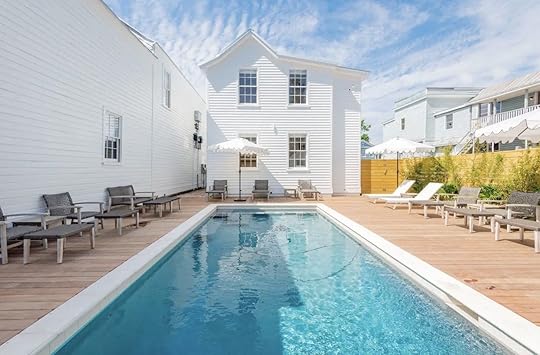
Charleston offers something no place else in the South does: Historic charm blended with the country’s best culinary and party scenes. This is what makes Charleston the best city in the South for a getaway adventure. Gorgeous sightseeing complements the city’s legendary food and drinks scene, and several chilled-out beaches line the city’s coast. These Airbnbs in Charleston, South Carolina are the best for a weekend getaway, solo or family or friends trip, from historic downtown guest houses to homes in some of the city’s more eclectic neighborhoods.
We hope you love the spaces and stays we recommend! Just so you know, Matador may collect a small commission from the links on this page if you decide to book a stay. Listed prices are accurate as of the time of publication.
Boutique Airbnb in Charleston’s historic district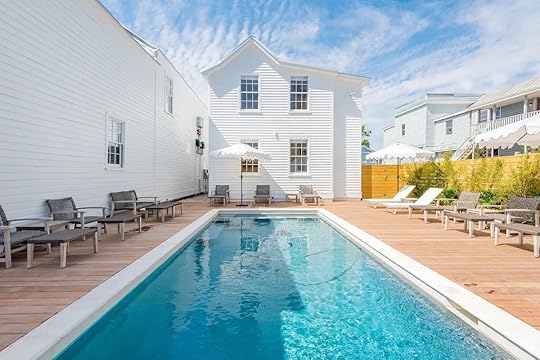
Photo: Airbnb
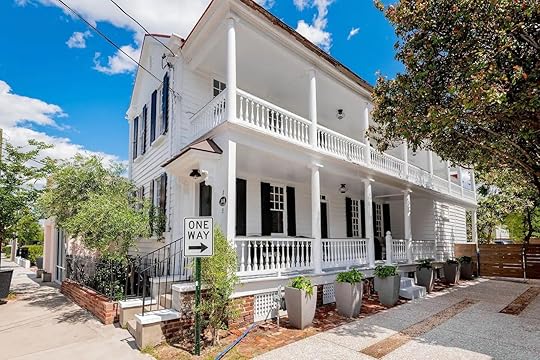
Photo: Airbnb
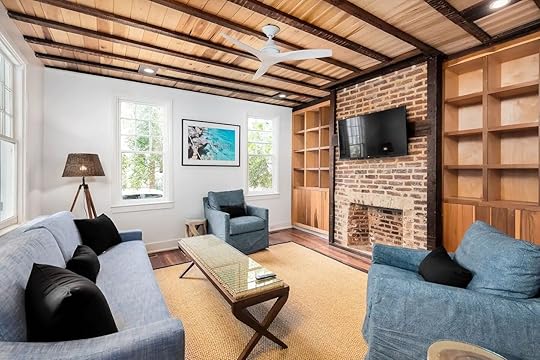
Photo: Airbnb
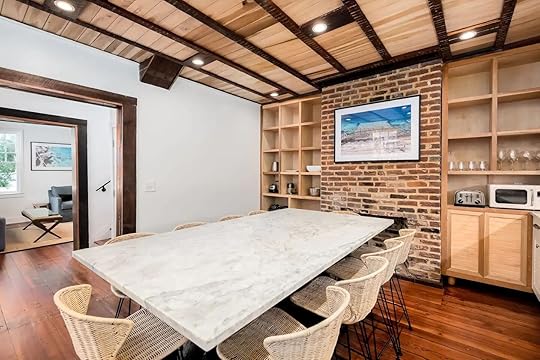
Photo: Airbnb
This historic home, which uses modern decor with vintage touches, can welcome up to ten guests. The stay is close to everything including the historic district, Charleston’s French Quarter, and other points of interest downtown. Spend the day sightseeing, and return for a spa night to make use of the home’s large pool and chill-out area in the back. This stay is also a great base for a walk through historic Charleston.
Ten guests, four bedrooms
Price: $759 per night

Photo: Airbnb
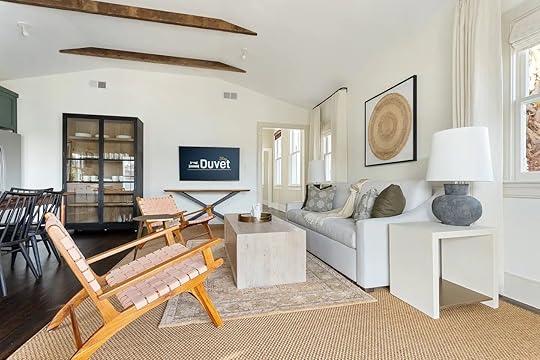
Photo: Airbnb
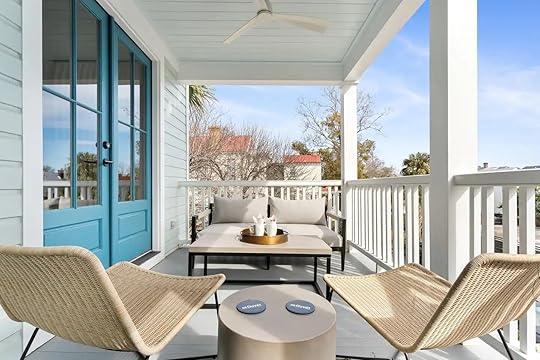
Photo: Airbnb
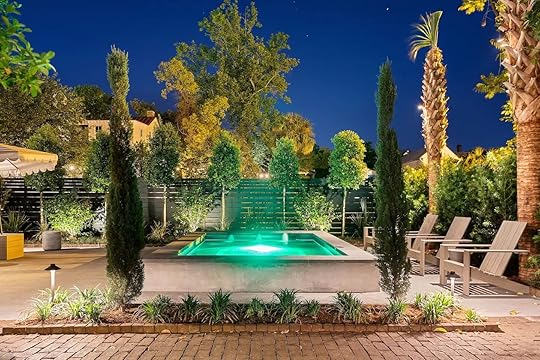
Photo: Airbnb
Why tour historic homes when you can sleep in one? This large historic house has been recently renovated and has a wraparound porch, as well as a private courtyard with a pool, perfect for sipping wine and watching the sunset. Just a short walk to the action on Upper King Street or a short ride to Rainbow Row and the Battery, this stay could be the perfect home base for exploring downtown Charleston.
Ten guests, four bedrooms
Price: $642 per night
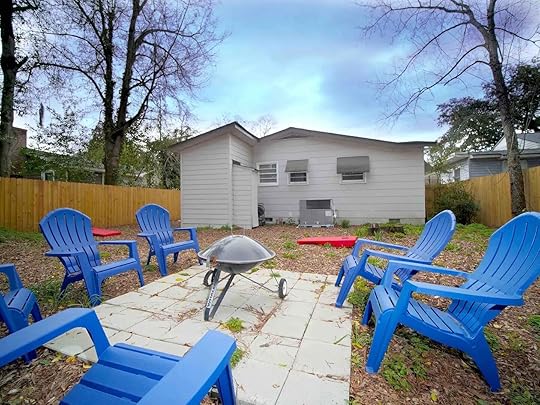
Photo: Airbnb
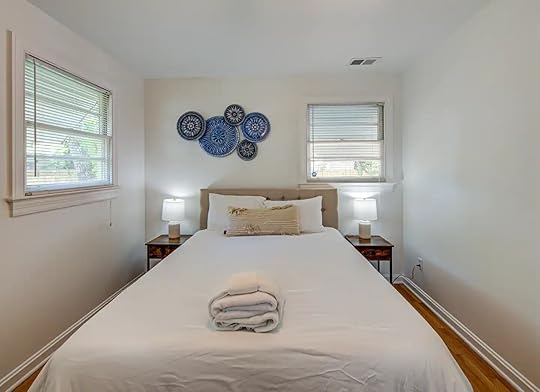
Photo: Airbnb
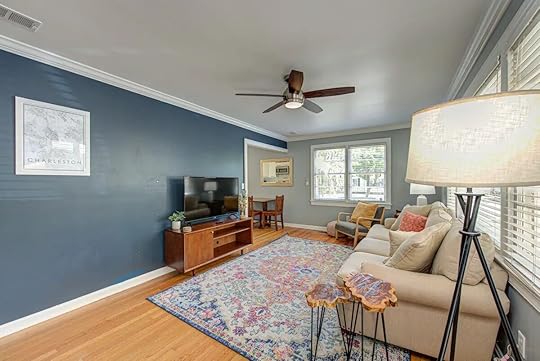
Photo: Airbnb
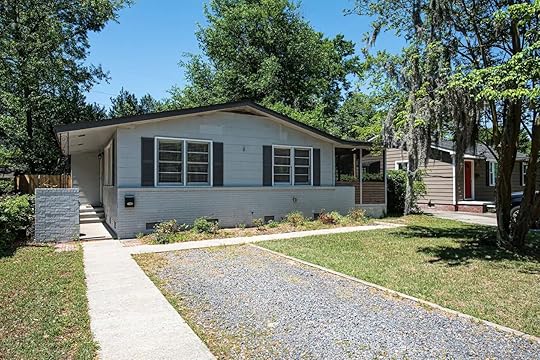
Photo: Airbnb
If your party has members traveling by plane, consider this three-bedroom home only eight minutes from the airport. Located in Park Circle, the historic district of North Charleston, this stay is within walking distance of the neighborhood’s eateries and a short drive away from downtown Charleston and nearby beaches. The house also has a backyard with a fire pit, and a screened-in porch to enjoy drinks without getting stung by mosquitos.
Eight guests, three bedrooms
Price: $451 per night
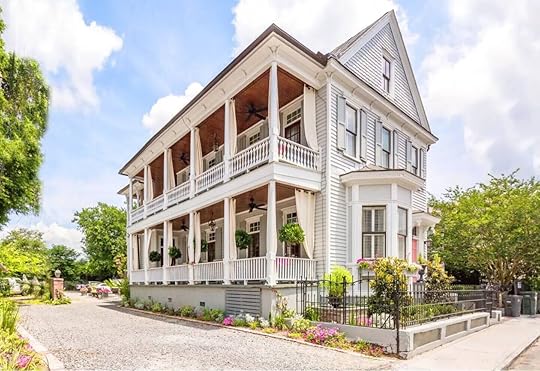
Photo: Airbnb

Photo: Airbnb
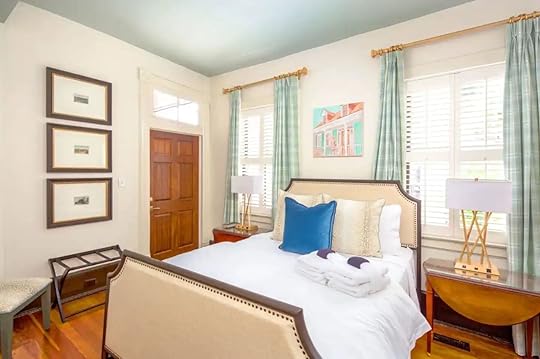
Photo: Airbnb

Photo: Airbnb
For a larger group looking to enjoy Charleston in style, this elegant apartment offers a variety of amenities with a great location. This Charleston Airbnb is in historic downtown, just a few blocks from King Street. Made up of two units, the apartments are connected by an interior door, creating a luxury four-bedroom, three-bathroom suite. There’s also an outdoor patio for laughs and bubbles.
Twelve guests, four bedrooms
Price: $818 per night
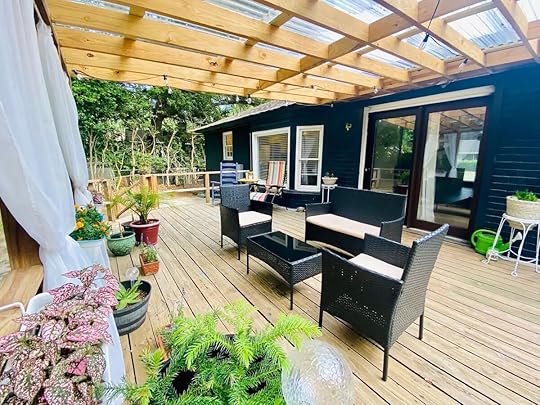
Photo: Airbnb

Photo: Airbnb
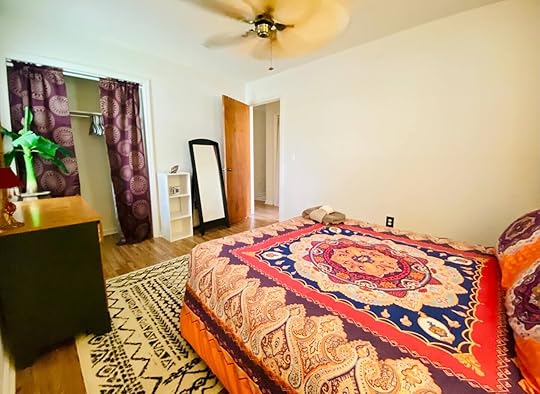
Photo: Airbnb
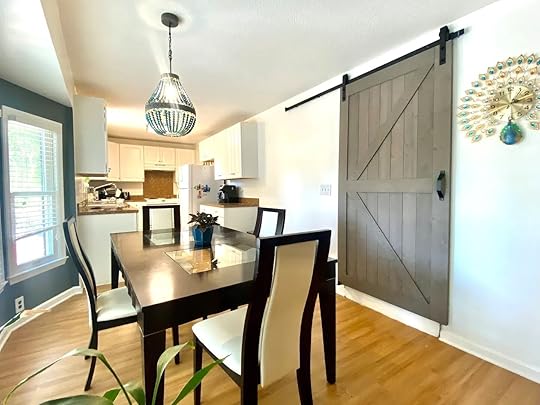
Photo: Airbnb
This beautifully decorated home in West Ashley offers the perfect place to rest after a day exploring downtown Charleston or soaking up the sun on Folly Beach, both less than 30 minutes away. Located across the Ashley River from downtown Charleston, the West Ashley district also offers plenty of bars and restaurants of its own. The house sleeps eight, and its full patio is sure to be the perfect place for afternoon cocktails or party games.
Eight guests, three bedrooms
Price: $475 per night
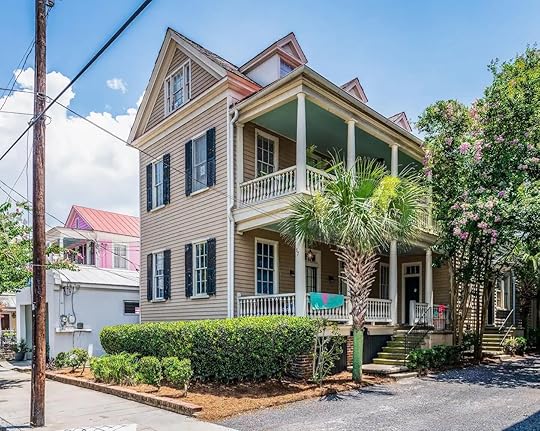
Photo: Airbnb
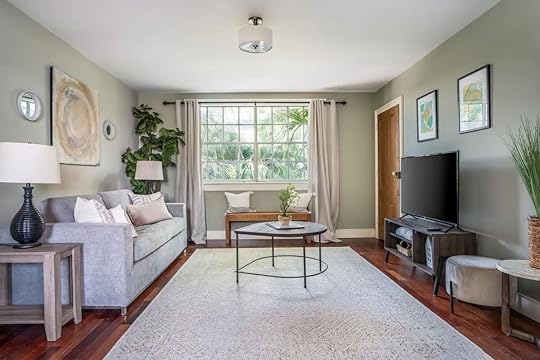
Photo: Airbnb
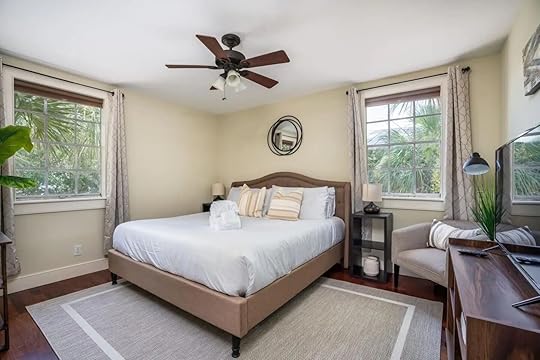
Photo: Airbnb
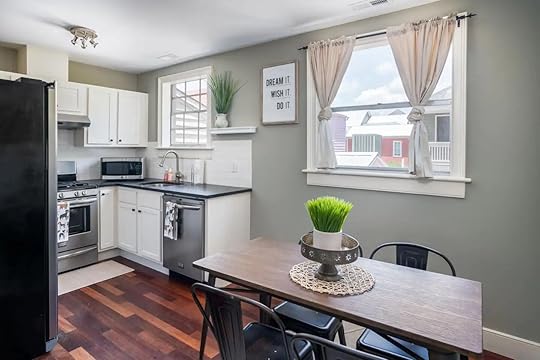
Photo: Airbnb
This house in the Cannonborough/Elliotborough district is the perfect stay for a group of foodie bachelorettes. Ten of the city’s most well-known restaurants are located in the district, not to mention more further south on the peninsula. Regardless of where you choose to dine, the home’s location near King Street is perfect for experiencing the town without the street noise from traffic and nightlife.
Five guests, two bedrooms
Price: $216 per night
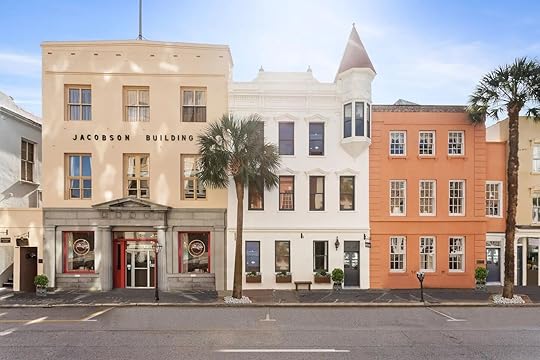
Photo: Airbnb
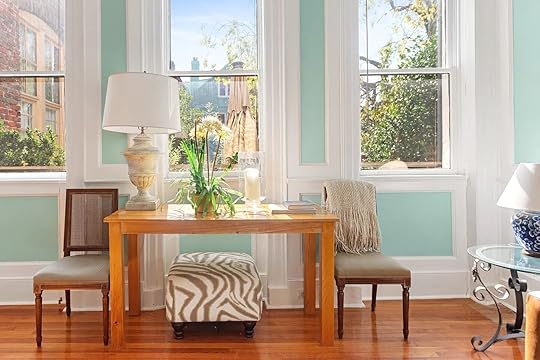
Photo: Airbnb
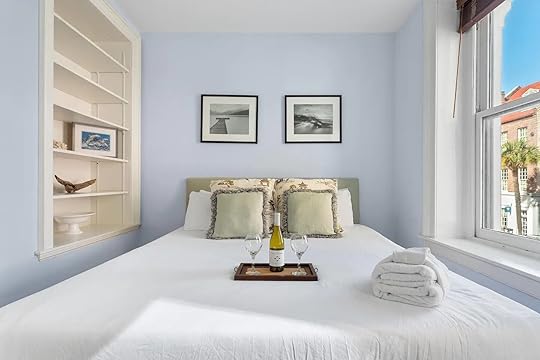
Photo: Airbnb
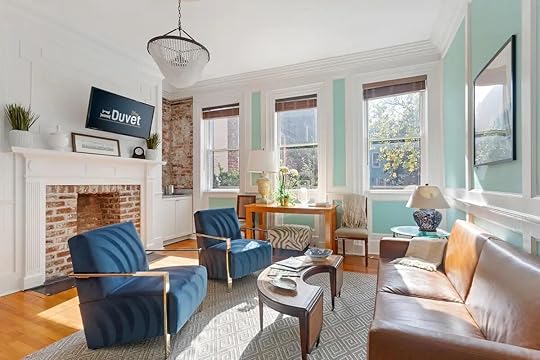
Photo: Airbnb
Just two blocks from Charleston’s iconic Rainbow Row, this second-floor condo suitable for for five guests has an almost unbeatable location for exploring Charleston’s historic district. This Airbnb in Charleston is also a quick walk from Waterfront Park, the perfect place to soak up the sunshine within view of the river and some of the city’s most beautiful historic homes.
Five guests, two bedrooms
Price: $530 per night
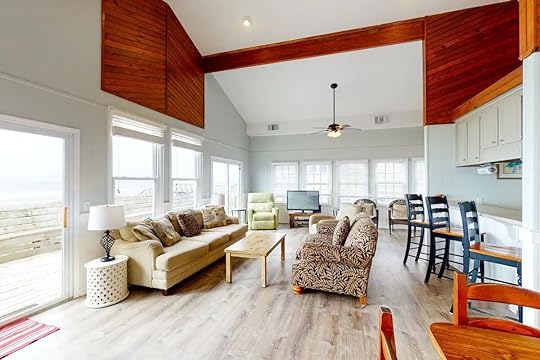
Photo: Airbnb
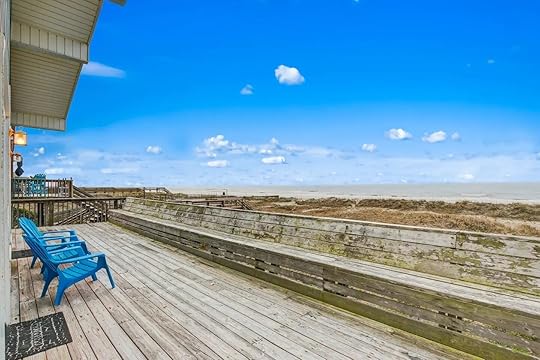
Photo: Airbnb
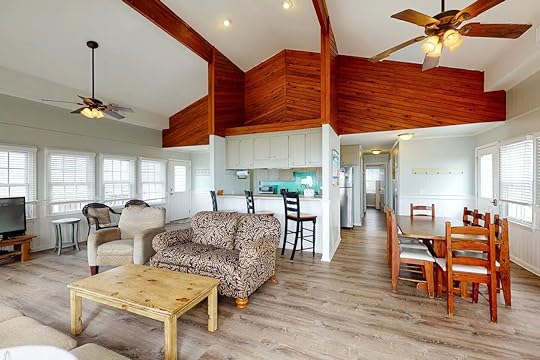
Photo: Airbnb
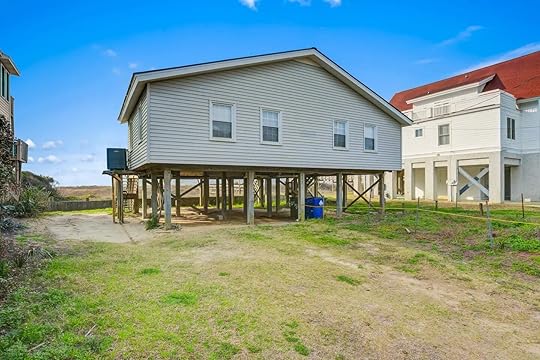
Photo: Airbnb
For a group who’d prefer to spend their days lounging on the beach, this beachfront home on Folly Beach won’t disappoint. With a large living space and porch, the house offers the perfect space for catching up and relaxing. After a day on the beach, head to downtown Charleston (only 11 miles away) for dinner and drinks. Parking won’t be an issue here, with room in the driveway for up to six vehicles.
Nine guests, five bedrooms
Price: $377 per night
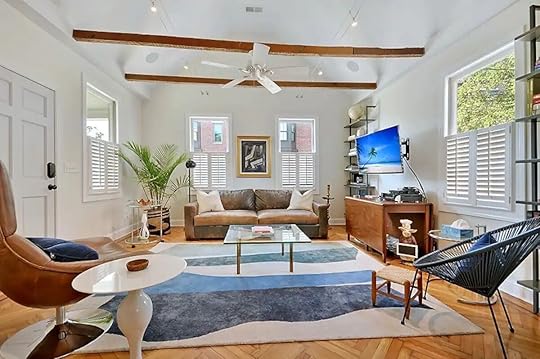
Photo: Airbnb
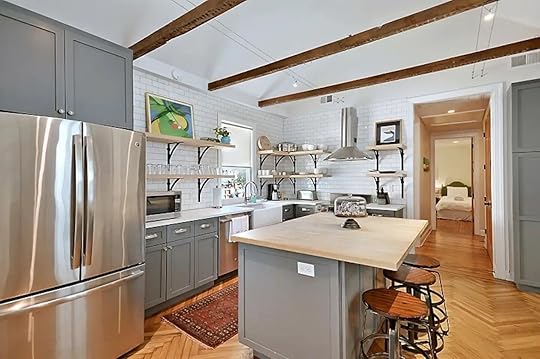
Photo: Airbnb
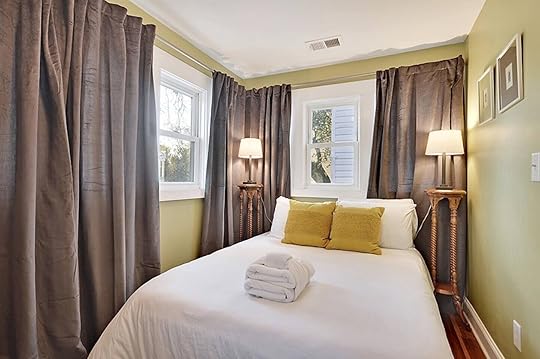
Photo: Airbnb
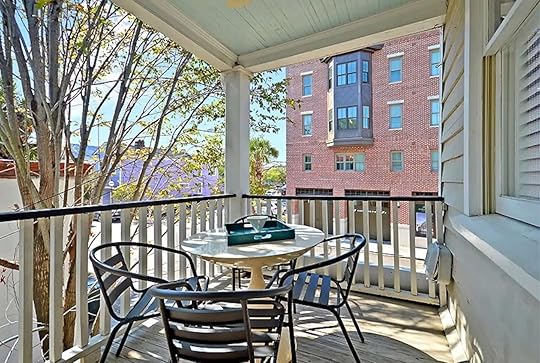
Photo: Airbnb
Just one block away from Upper King Street, this seven-guest apartment offers a place to explore Charleston’s historic district for a lower price than stays further south on the peninsula. The apartment has a lot of character, with exposed beams and open kitchen shelving, not to mention it’s within walking distance to bars and clubs.
Seven guests, two bedrooms
Price: $287 per night
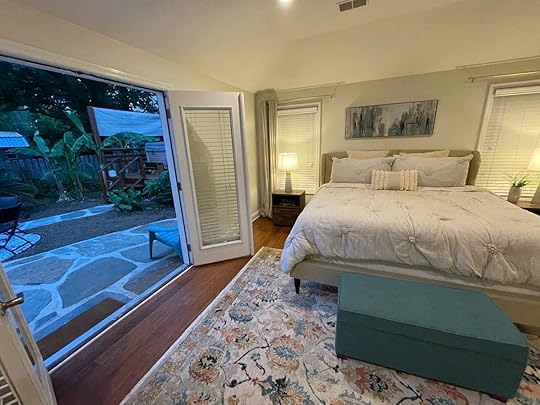
Photo: Airbnb
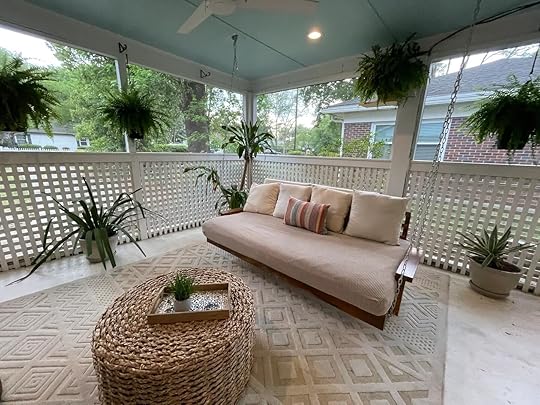
Photo: Airbnb
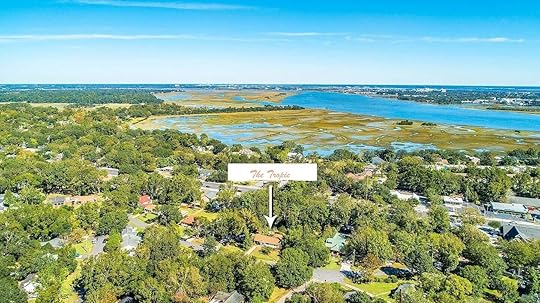
Photo: Airbnb

Photo: Airbnb
This colorful Avondale home can accommodate up to nine guests and includes a large porch for socializing and a hot tub in the backyard. Avondale, another neighborhood located across the river from downtown Charleston, is sometimes called the downtown of West Ashley. Shops and restaurants are within walking distance, and downtown and beaches are nearby.
Nine guests, four bedrooms
Price: $600 per night
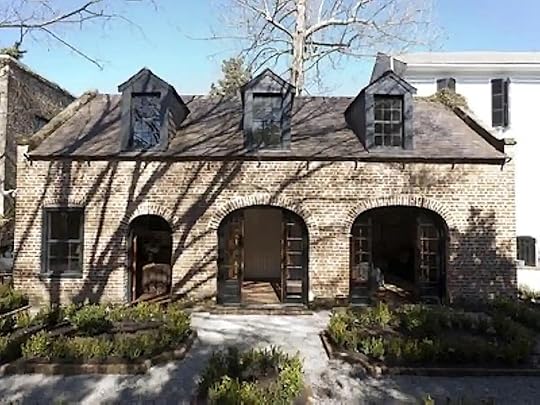
Photo: Airbnb
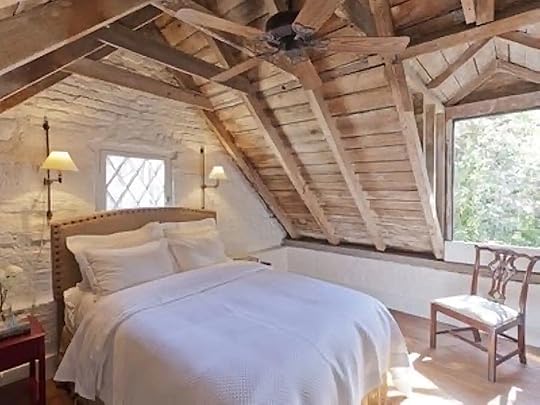
Photo: Airbnb
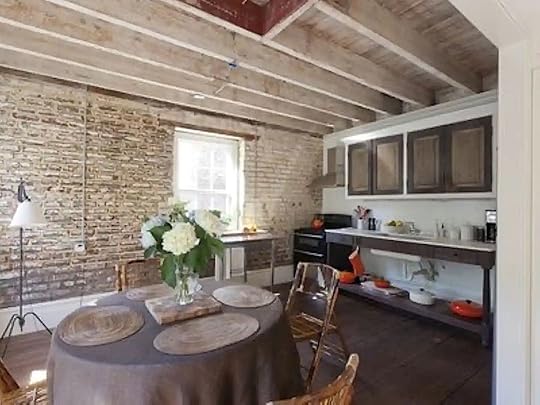
Photo: Airbnb
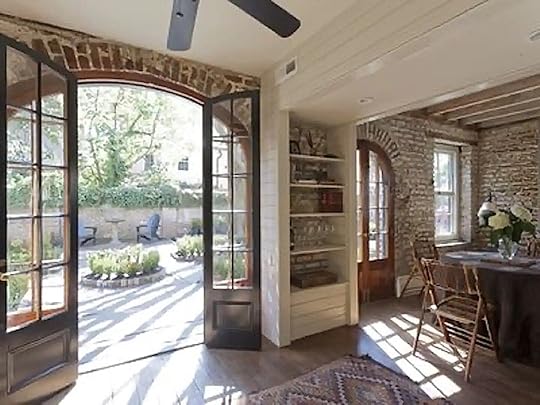
Photo: Airbnb
If you want to stay on the main peninsula, but don’t want to splurge on a stay closer to downtown, this historic house in Harleston Village is the perfect fit. Harleston Village is home to the College of Charleston campus, as well as a number of historic homes and churches. The property offers the vibe of the Old South with modern amenities and a location that is super convenient to everything from restaraunts to bars to shopping, and even the beach.
Six guests, two bedrooms
Price: $600 per night
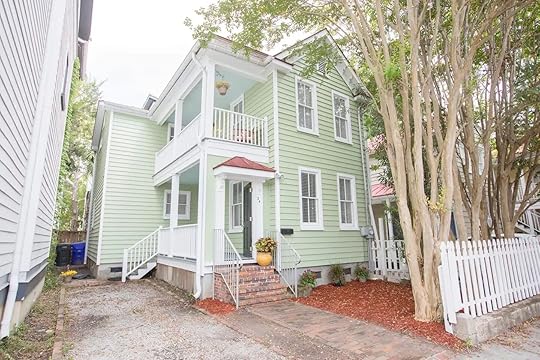
Photo: Airbnb
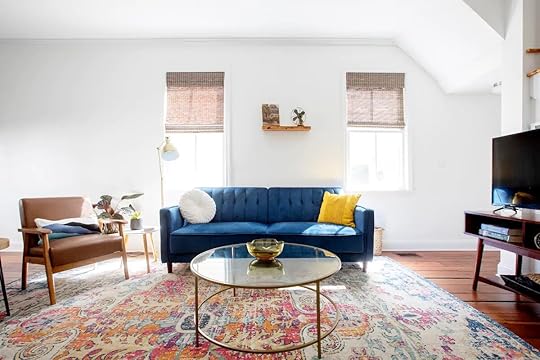
Photo: Airbnb
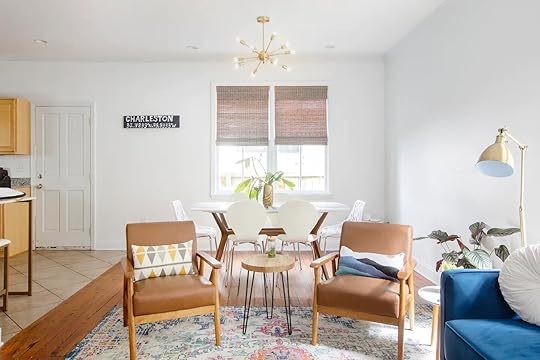
Photo: Airbnb
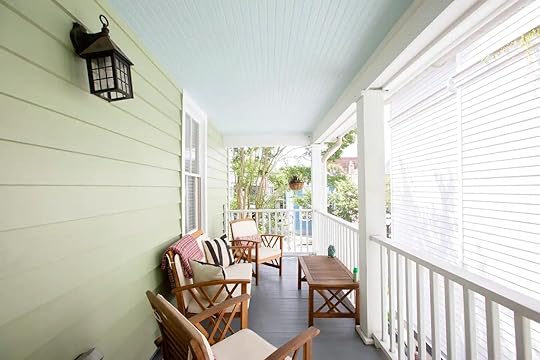
Photo: Airbnb
If you’re worried about having enough space to get ready for a night out, this house is your answer. This stay in the Cannonborough/Elliotborough district along Upper King Street sleeps nine guests, with four queen size beds and three full baths. The house also has a parking space for a car and lists other parking areas in its description.
Nine guests, three bedrooms
Price: $784 per night

Photo: Airbnb

Photo: Airbnb

Photo: Airbnb

Photo: Airbnb
Sit back and relax at this beachfront villa in the Isle of Palms. This stylish villa features stunning beachfront views with sunrises and sunsets that you can see from your private covered balcony. There is also a private pier and pool that is a few steps away from the ocean.
Four guests, one bedroom
Price: $162 per night

Photo: Airbnb

Photo: Airbnb

Photo: Airbnb

Photo: Airbnb
This quaint cottage is the perfect home base in Charleston, South Carolina. This cozy and spacious cottage has a unique charm with its french doors throughout the home and vintage finishings. The home has a spacious living area with bright and natural lighting and a view of the courtyard outside, and the house also has an outdoor space with a heated pool and garden.
Four guests, one bedroom
Price: $313 per night

Photo: Airbnb

Photo: Airbnb

Photo: Airbnb

Photo: Airbnb
Welcome to this bright and colorful, centrally located home in Charleston. A local designer designed this newly renovated home with a spacious, cozy living room, a brightly colored kitchen, and two bedrooms. Explore the Elliotborough/Cannonborough district of downtown and take in the downtown charm.
Five guests, two bedrooms
Price: $174 per night
December 13, 2022
Vermilion Cliffs National Monument Has Otherworldly Rock Formations You Can See Up Close

Located in Arizona, the Vermilion Cliffs National Monument consists of sandstone patterned with striking natural white, orange, and red marbled designs. The 280,000 acre park is home to geologic phenomena accessed by a series of trails, including the Paria Plateau, Vermilion Cliffs, Coyote Buttes, and Paria Canyon. For those with permits, the monument is open for multi-day backpacking excursions. The population of endangered California condors that takes refuge here is also worth checking out.
@visit White Pocket is an area inside the Vermilion Cliffs National Monument in the US. These amazing rock formations will make you feel like you’re on another planet@liveloveruntravel #whitepocket #VermilionCliffs #summerfun #arizonatravel ♬ original sound – Visit
One of the most spectacular of these natural wonders at Vermilion Cliffs National Monument is the White Pocket, located near Paria Plateau. Formed by wind and rain erosion, the sandstone rock formations at White Pocket are sometimes nicknamed “brian rocks” due to their bulbous and ridged formations. While the surrounding rocks are swirls or red and orange, the White Pocket rocks stand out because they are stark white.
Because this series of cliffs and canyons have such a distinctive color palette, thanks to a combination of layers of limestone, iron oxide deposits, and other types of minerals in the rocks, this part of Arizona is sometimes known as the Painted Desert.
Visitors to Vermillion Cliffs National Monument can drive to a parking area near White Pocket, using the House Rock Valley Road. An all terrain, four wheel drive vehicle is required to reach White Pocket, according to the Bureau of Land Management, because much of the road there is unpaved. From there, the trailhead is easily accessible. The trail is sandy so make sure you have appropriate walking shoes. It leads directly to the most spectacular formations at White Pocket.
Two other popular spots within Vermillion Cliffs National Monument are Coyote Buttes, which features swirls of white and orange, and The Wave, one of the most photographed places in the United States. Only 64 people are allowed to visit this rock formation everyday, and you need to a permit to enter. 
This Former Salt Mine Is Now a Spectacular Underground Theme Park

The most magical place on Earth might not actually be an amusement park in Orlando, Florida, but rather an underground theme park in Romania. Salina Turda, a former salt mine located in Transylvania, has everything a theme park should have. There’s a Ferris wheel, a bowling alley, a mini-golf, and even a multi-sport court — all of which are found 137 feet below ground.
@visit Salina Turda in Romania is definitely one of the most unique theme parks around @Stephen Morin #salinaturda #saltmine #uniqueplaces #romaniatravel ♬ original sound – Visit
Salina Turda operated as salt mine from the 11th century to 1932, when it became unprofitable and closed down. The mine served as a bomb shelter during World War II and as a cheese storage facility before it reopened as a tourist attraction in 1992. After some major renovations between 2008 and 2010, Salina Turda became one of the most unusual theme parks in the world.
Visitors to Salina Turda walk down 172 steps, or 13 floors, to get to the bottom of Rudolph Mine, a dome-shaped cavern. Each floor on the way down is marked with the year when this particular area was exploited for salt.
The bottom of the mine is where all the attractions are located, including the giant elevator shaft and the 65-foot-tall Ferris wheel from where visitors can take in the surreal environment. This is also where you’ll find the mini-golf, the two bowling lanes, the sports court, the three billiard tables, the six table tennis tables, the children’s playground, and the 180-seat amphitheater. From there, a wooden bridge leads to Terezia Mine, another section of Salina Turda that works as a sort of island from where people can hop in a boat and paddle around an underground lake.
Being a mine, Salina Turda is very dark, but an eerie and striking lighting system allows visitors to see the carvernous inside while keeping the atmosphere mysterious.
Visitors to Salina Turda can pick and choose what they wish to do during their stint underground, whether that’s taking a guided tour, walking around the mines on their own, playing table tennis, or boating on Terezia Mine Lake, but know that all the activities have a separate fee and are limited to a certain amount of time per person. Admission is 30 RON (6.50 USD), a guided tour is 100 RON (21.50 USD), playing table tennis for 30 minutes is 20 RON (4.30 USD), etc. Check out the prices of all the activities you wish to do on the website. 
The Matador Travel Awards: 2022

The way people travel is changing, and fast. As with any trend, some industry leaders are ahead of the curve. We looked at six categories this year to find the outstanding destination focused on wellness and sustainability, and the emerging travel destination, in addition to shout outs for an airline, an influencer, and an important cause to rally behind.
For our second annual survey, Matador 2022 Travel Awards turned to a panel of tourism experts to identify both the trends and the trailblazers. Thanks to the panelists for indicating their top picks from among the nominations put forward by Matador Network’s own international team of writers and editors.
Meet the PanelSustainable DestinationEmerging DestinationWellness DestinationCause To Get BehindBest AirlineInfluencer To WatchHow to road trip Dalton Highway

“Don’t take the car past Lake Galbraith, or it’ll be too far for us to rescue you.”
The woman at the rental car agency wasn’t laughing. In a briefing that felt more like a CPR training course than the fine print of renting a Ford Explorer, she listed all the hazards that awaited us on the Dalton Highway. There were treacherous potholes, hundreds of miles of unpaved road, almost zero service stations, no cell reception, and bears.
“Have fun, guys,” she said without a hint of irony. “It’s gonna be a blast.”
Turns out, she was right on all counts.
I had enlisted a friend to share the journey with me, as I was told traveling the most remote highway in the country alone wasn’t the smartest idea. Credit to him for accepting an invite that pretty much read like this: “Hey, you wanna drive into the Arctic Circle on a highway that I’m pretty sure was in Ice Road Truckers?”
When you tell people you’re going to Alaska to “drive on a highway,” they react like you just told them you’re having SPAM for dinner. But anyone who knows the Dalton Highway understands that it’s perhaps the only road in the United States that can claim to be a destination in itself. Starting in Fairbanks, Alaska’s second largest city, the highway stretches 414 miles north to the Arctic Ocean through lush forests, winding rivers, dramatic mountain passes, and Arctic wilderness. It’s the most remote major highway in the US, ending about 600 miles north of where Into the Wild’s Chris McCandless starved to death in a disused bus.
With that comforting thought in mind, we drove our car off the lot and to our first — and most important — stop of the entire trip: the supermarket.
Planning a Dalton Highway road tripBuilt in 1974 to supply the Trans-Alaska Pipeline System, the Dalton Highway initially served solely as a commercial haul road. Although the infrastructure has improved since then, it still remains a trucker’s road at heart. Paved sections alternate with long stretches of dirt and gravel, only two fuel (and food) stops exist between Fairbanks and Deadhorse — the highway’s northern terminus — and you won’t find a single McDonalds, Walgreens, or grocery store. Basically, if you didn’t pack it in Fairbanks, plan to live without it.

Photo: Ovidiu Hrubaru
People always tell you not to go grocery shopping on an empty stomach because you’ll buy everything in sight. Well, go on an empty stomach. This is the last chance you’ll have to stock up on food; you don’t want to be 250 miles above the Arctic Circle and realize you’re three meals short.
Our most important purchase was a cheap styrofoam cooler that allowed us to bring perishables on the journey. This really came in handy for cold cuts, cheese, pre-cooked chicken, yogurts, Lunchables — hey, there won’t be anyone around to judge you — and one of those crappy $3 birthday cakes they sell in the dessert section. We’ll come back to that later.
Beyond groceries, you’ll need a vehicle hefty enough to store your food purchase — and more importantly, to get you safely up the Dalton. A car with four-wheel drive, spare tires, and traction control is a must. You should also have a CB radio so you can communicate with other cars on the road, alert trucks if you’re turning around a hairpin curve, and call for help if needed. The Northern Alaska Tour Company in Fairbanks rents cars specifically for traveling up the Dalton Highway, so it’ll make sure your vehicle is properly equipped.
It’s also a good idea to bring bear spray. Much of northern Alaska’s land is owned by the Bureau of Land Management. That means it’s essentially public land with very little state intervention, and almost no designated trails. If you want to hike, you’ll have to forge your own path through the wilderness. It’s unlikely that you’ll be fending off bears, but better to have spray and not need it than not have spray and wish you’d bought better running shoes.
Dalton Highway mapThe Dalton Highway begins just north of Fairbanks at Elliot Highway, and ends 414 miles later at Deadhorse, an isolated town of about 50 permanent residents near the Arctic Ocean. The terrain surrounding the arctic highway varies, but much of it consists of rugged arctic tundra; depending on the time of year it might be blanketed in snow or covered in verdant green grass. Drivers will also pass through the Brooks Mountain Range and Arctic Foothills. Don’t expect a smoothly paved drive. While some stretches are well maintained, other parts of Dalton Highway consist of gravel, or a mixture of gravel and pavement. The road is often caked in mud or snow.
The best places to stop along the Dalton Highway to enjoy the scenery, rest, and replenish your supplies is the Yukon River Camp, Coldfoot Camp, the village of Wiseman, Lake Gilbraith, finally ending at Deadhorse and Prudhoe Bay. Coldfoot Camp and Wiseman are both about three hours from Yukon River Camp. At Wiseman, you can stop and stay over night in a cabin in the dense, isolated woods.
An hour and half outside Wiseman, you’ll pass through the Atigun Pass. From there, there are no more places to stop for rest or supplies for 230 miles, until you hit Deadhorse. Deadhorse is an oil refinery site, with a small permanent population. There are simple hotels and a general store in Deadhorse. Before you turn around there are camps sites at Lake Galbraith, about three hours from Deadhorse. Once you’ve rested and refueled, you’ll need to turn around and head back to Fairbanks, and back to civilization.
Yukon River CampOnce you leave Fairbanks you won’t encounter your first outpost of civilization for about three hours. The Yukon River Camp isn’t just a simple truck stop. It’s a camp right on the banks of the mighty Yukon River that offers you a rare glimpse into a different pace of life. The camp is staffed by people from all over the country who came to Alaska seeking adventure, and each has a unique story to tell about how they wound up living on the Yukon River. You might even get to join the staff by the campfire as they watch for the Northern Lights.

Photo: Eben Diskin
A two-minute walk will bring you to the river, in the shadow of the Yukon River Bridge. If you notice two tents on a raft floating in the river, it’s not a couple of campers trying to one-up you. It’s Neil Ecklund and his son, Lauro. Meeting Neil and Lauro will make you feel like you’ve gone back in time to an age when tents were houses, you caught your own dinner, built your own fire for warmth, and the river was the primary means of transportation.
Neil Eklund competed in the famed Iditarod Trail Sled Dog Race in the early 1980s, and has lived on the river since before the Dalton Highway existed. Now he and his son Lauro build log rafts, fish, transport firewood on the river, and mush dog teams. They also run a variety of tours including dogsledding, camping, log rafting, and Northern Lights expeditions. If you’re lucky, Lauro will even show you his kennel of rambunctious sled dogs.
Wiseman and Coldfoot CampNot long after you leave the Yukon River Camp you’ll cross into the Arctic Circle. There are no visitor centers, road markers, or dramatic changes of scenery to mark the occasion — just a sign slightly off the main road that says “Arctic Circle.” There’s also a dispersed campsite in the vicinity of the sign, for those who want to say “I camped on the edge of the Arctic Circle,” but otherwise your passage is unceremonious. Just before the Arctic Circle sign, you can stop briefly at Finger Mountain. This deceptively named attraction is more like a large pile of stones than a mountain, but climbing to the top — which will take you 10 minutes — does give you a sweeping view of the lonely road, and a sense of the vast Arctic wilderness.

Photo: Eben Diskin
About three hours from the Yukon River Camp, you’ll have your choice of two lodgings — Coldfoot and Wiseman. If you have time it’s worth spending a night at both. Coldfoot, which you’ll reach first, is the oldest stop on the Dalton Highway. It has less of a summer camp vibe than the Yukon River Camp, but there are a wide range of excursions led by knowledgeable guides to keep you busy, and you’ll be staying in the trailers used by the workers who built the Alaska Pipeline, which is a pretty cool perk.

Photo: Eben Diskin
Coldfoot Camp pretty much has an excursion for every season and interest. There are packraft adventures, snowshoe trips, Arctic mountain safaris, Northern Lights viewings, dog sled excursions, and fat bike tours. Our fat bike tour took us to the peaceful Slate Creek on the Chandalar Trail, an old Gold Rush road. On the way back, our guide Dan showed us an abandoned school bus where a resident of Coldfoot used to live with his entire family. Now it’s a treasured part of Coldfoot Camp’s folklore.
When I made an obligatory Chris McCandless joke, Dan replied that the Into the Wild protagonist is a sore subject for many Alaskans, who believe McCandless is portrayed as a hero when he should be a cautionary tale. “There’s only one difference between that guy and the people who actually live up here,” Dan said. “Competence.”
Just a half-hour north of Coldfoot you’ll find the tiny village of Wiseman. Unlike Coldfoot and the Yukon River Camp, Wiseman is an actual village, and has been long before the highway was built. Located ten minutes off the Dalton, at the end of a dirt and gravel road, the old Gold Rush town is home to 14 permanent residents, all of whom live in log cabins among the trees.

Photo: FloridaStock/Shutterstock
Much like Neil and Lauro on the Yukon River, the people of Wiseman live a subsistence lifestyle, surviving largely on hunted meat. Stroll around the village and visit Nikki Reakoff’s craft shop, where she makes jewelry from animal fur, bones, and antlers; check out the vintage abandoned cars that have been sitting in the woods for decades; and spend some time down by the river. On Sundays you can even attend a church service led by local trapper Jack Reakoff.
I ran into Jack when he was sifting through some cranberries in his yard. Behind him, a pile of moose and caribou skulls. When I told him I was writing about the Dalton Highway he seemed amused.
“Everyone says Dalton’s dangerous,” he said. “But they shoulda seen it twenty years ago. I was here before the highway, and that was a tough haul. As long as you’ve got common sense, I guess it’s as safe as any other road.”
He was right.

Photo: Arctic Getaway Log Cabins
Wiseman, Alaska lodgingContrary to what you might think, lodging in Wiseman doesn’t consist of a chilly night in a canvas tent while Jack Reakoff patrols the perimeter for bears. The Arctic Getaway Log Cabins are both cozy and well-appointed. But the best part of your stay won’t be the warm bed — it’ll be your hosts. Berni and Uta hail from Friesing, Germany, and lucky for us, somehow found their way to Arctic Alaska.
The first thing you notice won’t be the rustic cabins or the moose skulls mounted above the doors. It’ll be the hand-built ping pong table sitting in the yard. Berni built the table himself, and it doesn’t take much convincing for him to drop everything he’s doing and play a game, or twelve, with you.
There are two other options available for lodging: The Boreal Lodging consists of three log cabins with full kitchens and bathrooms. The Slate Creek in, rustic, no frills rooms with twin beds, which is closer to Coldfoot. The Arctic Hive in Wiseman offers yoga retreats, but not public, year around lodging for people just passing through the region.
Over the Atigun PassOnce you depart Wiseman and Coldfoot, your journey gets interesting. There are no more stops, fuel stations, or lodgings for 230 miles until Deadhorse, which represents the end of the highway just before the Arctic Ocean.
About an hour north of Wiseman, you’ll see the landscape change dramatically. The green, wooded wilderness you’ve grown accustomed to will suddenly give way to flat terrain. Previously, there was a sign marking the spot of the “last tree” and the beginning of the arctic tundra, but that tree has since been cut down. As you approach the Brooks Range, you’ll find yourself wanting to stop every five minutes to take pictures of the dramatic snow capped mountains.

Photo: Bruce Wilson Photographer/Shutterstock
The epic views really hit their stride on the Atigun Pass, at an elevation of nearly 5,000 feet. This is the point at which the highway crosses the Continental Divide, and the steep grades and hairpin curves make it one of the road’s most treacherous stretches. Use your CB radio to alert other drivers when you’re rounding curves, take it slow, and you’ll be fine. Honestly, you’ll want to drive as slow as possible anyway to really take in the views.
On the other side of the pass, the landscape looks dramatically different. The mountainous geography flattens and it suddenly feels like you’re driving through the Midwest, minus the cornfields. You can choose to go all the way to Deadhorse and Prudhoe Bay, which are essentially oil refinery sites, or turn around and head back. If you do decide to turn around, don’t do so without first visiting Lake Galbraith, about 27 miles north of Atigun Pass. The lake has a parking area and a few campsites, and it’s a great picnic lunch stop before embarking on the journey home. We took this opportunity to enjoy some cheap birthday cake, in celebration of reaching our northernmost point.
Staying in FairbanksWhen you finally return to Fairbanks, your car will be caked in mud and you probably won’t look (or smell) much better. The only way to cap off an intrepid adventure on the most remote highway in the country is with a well-earned spa day. (No, that’s not just wishful thinking.)

Photo: Eben Diskin
Chena Hot Springs Resort, just under an hour from Fairbanks, is a geothermal spa ideally suited to travelers who have just returned from a rough week on the Dalton. You can treat yourself to a massage, take a dip in the outdoor or indoor hot tub, or enjoy the healing waters of the geothermal Rock Lake. There’s also an excellent restaurant on site serving locally caught salmon, a famous tomato bisque, and vegetables grown in the on-site greenhouse.
The most eye-catching part of Chena isn’t even the Rock Lake or the private massage cabins — it’s the giant ice museum sitting just outside the main entrance. The Aurora Ice Museum is the world’s largest year-round ice environment, created using over 1,000 tons of ice and snow. It houses dozens of meticulously carved and illuminated ice sculptures, including an ice bar where you can purchase appletinis served in glasses made of ice. There’s also a few bedrooms carved into the ice. Rumor has it, no one has successfully lasted the night without retreating to the main hotel, but if you were bold enough to brave the Dalton, you should also be bold enough to spend the night in a block of ice.
Dalton Highway toursIf you’re not comfortable or equipped to drive the Dalton Highway (if for instance, you don’t own a vehicle that can safely traverse the distance) but you still want to experience the wonder and majesty of the Arctic wilderness, there are several tour companies which offer Dalton Highway tours. Alaska Tours offers a fully guided van tour from Deadhorse back to Fairbacks. The tour stops in Coldfoot, and passes by the Gates of the Arctic National Park, the Arctic National Wildlife Refuge, the Brooks Range and Alaska’s North Slope. Go Alaska Tours offers a Arctic Circle Van Tour down the Dalton Highway, where passengers should be on the look out for black bears and caribou.
Can anyone drive the Dalton Highway?Anyone can drive the Dalton Highway. However, people planning a trip along the Dalton Highway should have a vehicle that can handle rough terrain, and that you don’t mind getting muddy. The Dalton Highway is also an isolated road, so anyone driving it should know the best practices for interacting with wildlife and should be accustomed to camping out or sleeping in cabins. Additionally, because there is often hundreds of miles between services like gas and food, drivers should be prepared with emergency gas and should pack extra provisions — not just food, but warm clothes and a spare tires as flats are common.
What is the bset vehicle for driving the Dalton HighwayThe best vehicle to drive the Dalton Highway is one that has four wheel drive and is easy to maneuver (so that means you probably don’t want to take a huge SVU on this road). The car should also have sturdy, all-terrain tires. It might also be smart to invest in windshield protection film, as cracked windshields from rocks have been to known to happen on the drive. Make sure your car is also outfitted with a CB radio because there is no cellphone service on the highway.
How long does it take to drive the Dalton Highway?The drive from Fairbanks to Deadhorse technically takes around 11 hours, it can be down one day. The two cities are 414 miles apart. However, you’ll want to stop at the many scenic spots and hot springs along the way to immerse yourself in the natural landscape. For more experienced outdoor adventurers taking the drive, there are also opportunities to stay in a log cabin and camp out. With stops, that amounts to 4-5 days of driving, if you plan to stop along the way to rest (which you should) and enjoy the mostly untouched Alaskan wilderness. Depending on where you want decide to stop, you could drive for as a little as 1 hour on some days, however the drive from Wiseman and Coldfoot Camp, which are necessary stops, to Deadhorse is around 6 hours.
Are rental cars allowed on the Dalton HighwayRental cars are allowed on the Dalton Highway. However, if you’re not planning to take your own vehicle, you need to check with the rental office where you want to rent your car because not every company allows rentals cars on gravel roads.
Can you camp along the Dalton Highway?You can camp along the Dalton Highway. There are four main campgrounds at different spots along the highway: Five Mile Campground, near the Yukon River, Arctic Circle Wayside Campground, Marion Creek Campground, and Galbraith Lake Campground at the end of the highway. Remember, these are rugged, isolated campgrounds with no amenities, so only experienced backpackers should venture attempt. 
Matador Network's Blog
- Matador Network's profile
- 6 followers



